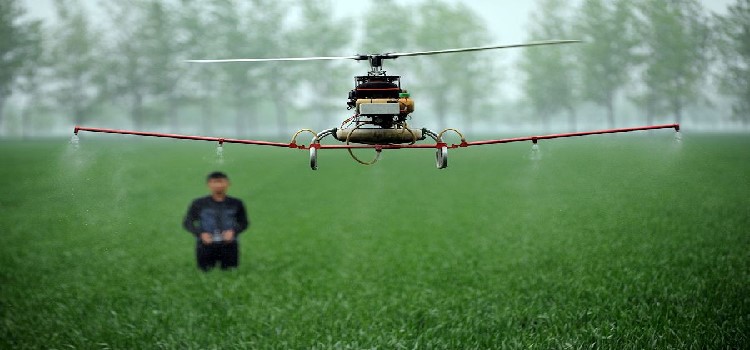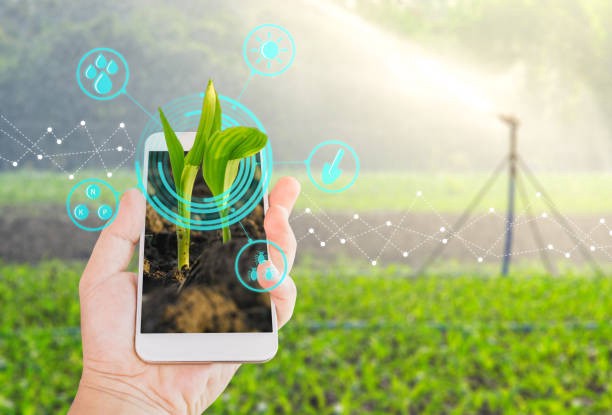
Rest of World Agriculture Robots Market by Type (Driverless Tractors, Unmanned Aerial Vehicles (UAVs), Milking Robots, Automated Harvest Robots, and Others), Offering (Hardware, Software, and Services), Farming Type (Indoor Farming and Outdoor Farming), Application (Dairy Management, Irrigation Management, Harvest Management, Soil Management, Inventory Management, and Others), and End User (Field Crops, Fruits & Vegetables, Livestock, and Others) – Opportunity Analysis and Industry Forecast 2023–2030
Industry: Agriculture | Publish Date: 22-Jul-2023 | No of Pages: 122 | No. of Tables: 102 | No. of Figures: 60 | Format: PDF | Report Code : N/A
Market Definition
Rest of World Agriculture Robots Market was valued at USD 0.52 billion in 2022, and is predicted to reach USD 1.98 billion by 2030, with a CAGR of 17.1% from 2023 to 2030. Agricultural robots are automated machines that use sensors, software, and actuators to perform tasks in farming. They can plant, harvest, monitor, and spray crops with precision and efficiency, reducing the need for manual labor and improving the working conditions of farmers.
Agribots are advanced robots equipped with sensors, actuators, and algorithms that enable them to perceive their environment, make intelligent decisions, and execute tasks. These robots utilize GPS or mapping technology to navigate fields and carry out a range of agricultural activities, including seed planting, crop harvesting, pesticide or fertilizer application, and crop health monitoring. Leveraging computer vision technology, agribots can identify crops and weeds, detect pests and diseases, and take precise actions based on the data they collect.
Overcoming Labor Shortages with Agriculture Robots in RoW
A lot of countries throughout the world are experiencing labour shortages in the agricultural industry. The ageing farming population, along with a reduction in young people choosing agricultural occupations, has resulted in a shortage of trained labour. Agriculture robots can help by automating labor-intensive processes and lowering reliance on physical labour and help farmers to overcome labour issues and preserve output by using these robots. Thus, it is expected to create significant gRoWth of the market in RoW.
Meeting the GRoWing Demand for Efficiency and Precision with Agriculture Robots in RoW
The gRoWing global population and the need to feed a rising number of people require efficient and precise farming practices. Agriculture robots offer enhanced efficiency by optimizing resource utilization, reducing waste, and improving overall farm productivity. With their ability to perform tasks consistently and accurately, these robots contribute to better crop yields and higher-quality agricultural products, which is further expected to boost the gRoWth of the market in RoW.
The high initial cost of investment of Agricultural Robots in RoW
Agriculture robots require complex technology, sensors, and equipment, which can be costly, making it difficult for farmers, particularly those with little means, to finance these systems. The initial expenditure consists of purchasing robots, integrating them into existing infrastructure, and training workers to operate and maintain the equipment hinders the widespread adoption of agriculture robots, which is expected to restrain the gRoWth of the market.
Technological Advancements in Agricultural Sector
Artificial intelligence (AI), machine learning, and robotics are transforming the agriculture industry in the Rest of the World (RoW). These technologies are enabling the development of more sophisticated and capable agricultural robots that can perform a wide range of tasks, such as planting cover crops, maintaining different cropping systems, and providing real-time data on soil health indicators. These advances are expected to create ample opportunities for the RoW agricultural robotics industry, which is projected to gRoW significantly in the future.
Competitive Landscape
The Agriculture Robots industry includes several market players such as Blue River Technology, Agrobotix, Digi-Farm, Field Robots, Kuka Agbot, Lely, Robotnik, Topcon Agriculture, Yara, and Zeta Robotics.
KEY BENEFITS
-
The RoW agriculture robots market report provides a quantitative analysis of the current market and estimations through 2023-2030 that assists in identifying the prevailing market opportunities to capitalize on.
-
The study comprises a deep dive analysis of the market trend including the current and future trends for depicting the prevalent investment pockets in the market.
-
The information related to key drivers, restraints, and opportunities and their impact on the market is provided in the report.
-
The competitive analysis of the market players along with their market share in the RoW agriculture robots market.
-
The SWOT analysis and Porter’s Five Forces model are elaborated in the study.
-
Value chain analysis in the market study provides a clear picture of the stakeholders’ roles.
RoW AGRICULTURE ROBOTS MARKET KEY SEGMENTS
By Component
-
Driverless Tractors
-
Unmanned Aerial Vehicles (UAVs)
-
Milking Robots
-
Automated Harvest Robots
-
Others
By Offering
-
Hardware
-
Software
-
Services
By Farming Type
-
Indoor Farming
-
Outdoor Farming
By Application
-
Dairy Management
-
Irrigation Management
-
Harvest Management
-
Soil Management
-
Inventory Management
-
Others
By End User
-
Field Crops
-
Fruits & Vegetables
-
Livestock
-
Others
KEY PLAYERS
-
GEA Group
-
CNH Industrial
-
Delaval
-
Deere & Company
-
AGCO Corporation
-
Trimble Inc.
-
Naio Technologies
-
Yanmar Holdings Co. Ltd.
-
SZ DJI Technology Co. Ltd.
-
Boumatic
-
Harvest Automation Inc
-
Autonomous Solution Inc
-
Clearpath Robotics
-
Ageagle Aerial System
-
Kubota Corporation




 Speak to Our Analyst
Speak to Our Analyst

































